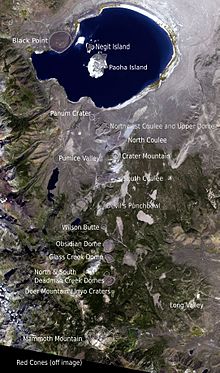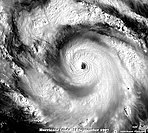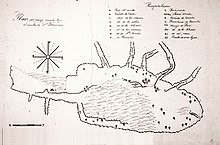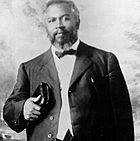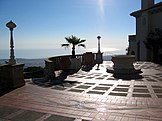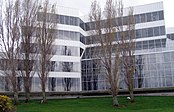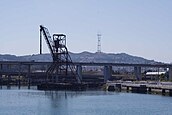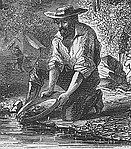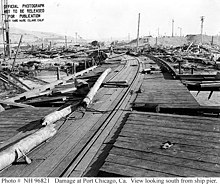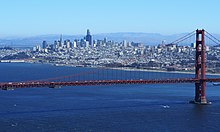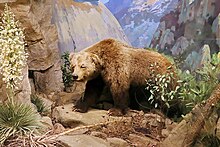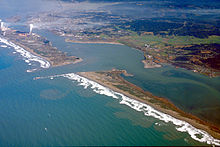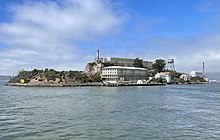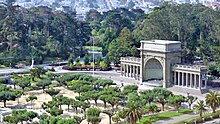Portal:California/Selected article
Selected articles list
Portal:California/Selected article/1
The Mono–Inyo Craters are a volcanic chain of craters, domes and lava flows in Mono County, Eastern California. The chain stretches 25 miles (40 km) from the northwest shore of Mono Lake to the south of Mammoth Mountain. The Mono Lake Volcanic Field forms the northernmost part of the chain and consists of two volcanic islands in the lake and one cinder cone volcano on its northwest shore. Most of the Mono Craters, which make up the bulk of the northern part of the Mono–Inyo chain, are phreatic (steam explosion) volcanoes that have since been either plugged or over-topped by rhyolite domes and lava flows. The Inyo volcanic chain form much of the southern part of the chain and consist of phreatic explosion pits, and rhyolitic lava flows and domes. The southernmost part of the chain consists of fumaroles and explosion pits on Mammoth Mountain and a set of cinder cones south of the mountain; the latter are called the Red Cones.
The region has been used by humans for centuries.
Portal:California/Selected article/2
Hurricane Linda was the strongest Pacific hurricane on record. Forming from a tropical wave on September 9, 1997, Linda steadily intensified and reached hurricane status within 36 hours of developing. Subsequently, it rapidly intensified, reaching winds of 185 mph (295 km/h) and an estimated central pressure of 902 millibars (26.65 inches of mercury). The hurricane was briefly forecast to move toward southern California, but instead, it turned out to sea and dissipated on September 17. It was the fifteenth tropical cyclone, thirteenth named storm, seventh hurricane, and fifth major hurricane of the 1997 Pacific hurricane season. While near peak intensity, Hurricane Linda passed near Socorro Island, where it damaged meteorological instruments. The hurricane produced high waves along the southwestern Mexican coastline, forcing the closure of five ports. When Linda was predicted to make landfall on California, it would have been the first to do so since a storm in 1939. Although it did not hit the state, the hurricane produced light to moderate rainfall across the region, causing mudslides and flooding in the San Gorgonio Wilderness; two houses were destroyed and 77 others were damaged, and damage totaled $3.2 million (1997 USD, $4.3 million 2008 USD). Despite the intensity, the name was not retired. (Full article...)Portal:California/Selected article/3
InPortal:California/Selected article/5
The
Portal:California/Selected article/6
TheIt is a large, black
Portal:California/Selected article/7
TheIn 1904, the
Portal:California/Selected article/8
TheThe Winfield Scott has been the object of numerous salvage operations since the crash, and currently rests underwater as part of the
Portal:California/Selected article/9
Its early members included Gertrude Stein and Judah Leon Magnes, who studied at Temple Sinai's Sabbath school, and Ray Frank, who taught them. Originally traditional, the temple reformed its beliefs and practices under the leadership of Rabbi Marcus Friedlander (1893–1915). By 1914, it had become a Classical Reform congregation. That year the current sanctuary was built: a Beaux-Arts structure designed by G. Albert Lansburgh, which is the oldest synagogue building in Oakland. (Full article...)
Portal:California/Selected article/10
The
Portal:California/Selected article/11
This northern section was deleted from the definition in the Streets and Highways Code in 2003, when the relinquished portion through downtown Sacramento was also removed, but it is still maintained and signed by the California Department of Transportation (Caltrans) as SR 160. (Full article...)
Portal:California/Selected article/12
The
The Red Hot Chili Peppers were formed in Los Angeles by Kiedis, Flea, guitarist Hillel Slovak and drummer Jack Irons. Due to commitments to other bands, Slovak and Irons did not play on the band's 1984 self-titled debut album, which instead featured guitarist Jack Sherman and drummer Cliff Martinez. Slovak rejoined for their second album, Freaky Styley (1985), and Irons for their third, The Uplift Mofo Party Plan (1987). Irons left after Slovak died of a drug overdose in June 1988. (Full article...)
Portal:California/Selected article/13

The
UCR's undergraduate
Portal:California/Selected article/14
The Beach Boys are one of the most critically acclaimed and commercially successful bands of all time, selling over 100 million records worldwide. They helped legitimize popular music as a recognized art form and influenced the development of music genres and movements such as psychedelia, power pop, progressive rock, punk, alternative, and lo-fi. Between the 1960s and 2020s, the group had 37 songs reach the US Top 40 (the most by an American band), with four topping the Billboard Hot 100. In 2004, they were ranked number 12 on Rolling Stone's list of the greatest artists of all time. Many critics' polls have ranked Today!, Pet Sounds, Smiley Smile (1967), Sunflower (1970), and Surf's Up (1971) among the finest albums in history. The founding members were inducted into the Rock and Roll Hall of Fame in 1988. Other members during the band's history have been David Marks, Bruce Johnston, Blondie Chaplin, and Ricky Fataar. (Full article...)
Portal:California/Selected article/15
The land on which the observatory stands was donated to the City of Los Angeles by Col. Griffith J. Griffith in 1896. In his will, Griffith donated funds to build an observatory, exhibit hall, and planetarium on the donated land. Construction began on June 20, 1933 using a design developed by architect John C. Austin based on preliminary sketches by Russell W. Porter. The observatory and accompanying exhibits were opened to the public on May 14, 1935. (Full article...)
Portal:California/Selected article/16
Hearst Castle was built on a 40,000 acre (160 km²) ranch that William Randolph Hearst's father,
Portal:California/Selected article/17
TheThe Coalinga earthquake was caused by an 0.5-meter uplift of the anticline ridge northeast of Coalinga, but surface faulting was not observed. Ground and aerial searches immediately after the earthquake revealed ground cracks and fissures within about 10 kilometers of the instrumental epicenter, none of which appeared to represent movement on deeply rooted fault structures. About five weeks later, on June 11, however, an aftershock caused surface faulting about 12 kilometers northwest of Coalinga. (Full article...)
Portal:California/Selected article/18
TheThe Dakin building has won a number of architectural awards including an
Portal:California/Selected article/19
TheEbell of Los Angeles was formed as a women's club in 1894, based on the principles and teachings of Adrian Ebell, a pioneer in women's education and organizing women's societies in the late 19th century. The minutes of the first meeting of Ebell of Los Angeles identify its purpose "to interest women in the study of all branches of literature, art and science and the advancement of women in every branch of culture." The club adopted as its motto, "I will find a way or make one -- I serve." (Full article...)
Portal:California/Selected article/20
The original Islais Creek stretched from the
Portal:California/Selected article/21
TheAs a
Portal:California/Selected article/22
ThePortal:California/Selected article/23

Yosemite National Park (/joʊˈsɛmɪti/ yoh-SEM-ih-tee) is a national park in California. It is bordered on the southeast by Sierra National Forest and on the northwest by Stanislaus National Forest. The park is managed by the National Park Service and covers 759,620 acres (1,187 sq mi; 3,074 km2) in four counties – centered in Tuolumne and Mariposa, extending north and east to Mono and south to Madera. Designated a World Heritage Site in 1984, Yosemite is internationally recognized for its granite cliffs, waterfalls, clear streams, giant sequoia groves, lakes, mountains, meadows, glaciers, and biological diversity. Almost 95 percent of the park is designated wilderness. Yosemite is one of the largest and least fragmented habitat blocks in the Sierra Nevada. (Full article...)
Portal:California/Selected article/24
ThePortal:California/Selected article/25
The and injuring 390 others.
A month later, the unsafe conditions prompted hundreds of servicemen to refuse to load munitions, an act known as the Port Chicago Mutiny. Fifty men—called the "Port Chicago 50"—were convicted of
Portal:California/Selected article/26

The exposed
Marine deposition occurred
Portal:California/Selected article/27
The first Japanese Americans arrived at Manzanar in March 1942, just one month after President Franklin D. Roosevelt signed
Portal:California/Selected article/28
The company experienced strong growth after its incorporation in 1985, expanding its distribution network from California to most of North America, and went public in 1993.
In 2001, Odwalla was acquired by
Portal:California/Selected article/29

The
The San Francisco Citizens' Committee wished to issue a commemorative coin as a fundraiser for a celebration of the statehood
Portal:California/Selected article/30
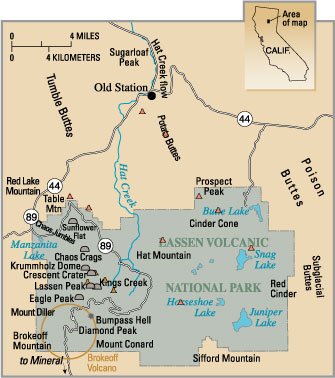
The Lassen volcanic area presents a
Between 3 and 4 million years ago, volcanic-derived mud flows called lahars streamed down several major mountains that included nearby but now extinct Mount Yana and Mount Maidu to become the Tuscan Formation. Basaltic and later andesitic to dacitic flows of lava covered increasingly larger areas of this formation to eventually form the lava plateau upon which the park is situated. About 600,000 years ago, Mount Tehama started to rise as a stratovolcano in the southwestern corner of the park, eventually reaching an estimated 11,000 ft (3,400 m) in height. (Full article...)
Portal:California/Selected article/31
The Daily News (originally the Illustrated Daily News) was a newspaper published in Los Angeles from 1923 to 1954. It was founded in 1923 by Cornelius Vanderbilt IV and bought by Manchester Boddy who operated it through most of its existence.
The Daily News was founded in 1923 by Vanderbilt as the first of several newspapers he wanted to manage. After quickly going into receivership, it was sold to Boddy, a businessman with no newspaper experience. Boddy was able to make the newspaper succeed, and it remained profitable through the 1930s and 1940s, taking a Democratic perspective at a time when most Los Angeles newspapers supported the Republican Party. (Full article...)
Portal:California/Selected article/32
The
The Carolwood Pacific Railroad inspired Disney to include railroad attractions in the design for the Disneyland theme park in Anaheim, California. Railroad attractions in Disney theme parks around the world are now commonplace. The barn structure that was used as the railroad's control center is now at the Los Angeles Live Steamers Railroad Museum in Los Angeles' Griffith Park. The Lilly Belle, some of the freight cars, and the caboose are now on display at the Walt Disney Family Museum in San Francisco, California. (Full article...)
Portal:California/Selected article/33
Prior to
Portal:California/Selected article/34
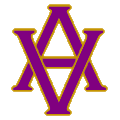
Founded as Amador Valley Joint Union High School (AVJUHS), it graduated its first class in 1923. Major construction and renovations were undertaken after district voters approved bonds in 1922, 1965, 1997, and 2016. (Full article...)
Portal:California/Selected article/35
Metallica is an American heavy metal band. The band was formed in 1981 in Los Angeles by vocalist and guitarist James Hetfield and drummer Lars Ulrich, and has been based in San Francisco for most of its career. The band's fast tempos, instrumentals and aggressive musicianship made them one of the founding "big four" bands of thrash metal, alongside Megadeth, Anthrax and Slayer. Metallica's current lineup comprises founding members and primary songwriters Hetfield and Ulrich, longtime lead guitarist Kirk Hammett and bassist Robert Trujillo. Guitarist Dave Mustaine, who formed Megadeth after being fired from Metallica, and bassists Ron McGovney, Cliff Burton and Jason Newsted are former members of the band.
Metallica first found commercial success with the release of its third album,
Portal:California/Selected article/36

The 2018 United States Senate election in California took place on November 6, 2018, to elect a member of the United States Senate to represent California, concurrently with other elections to the United States Senate, elections to the United States House of Representatives, and various state and local elections.
Under California's non-partisan blanket primary law, all candidates appear on the same ballot, regardless of party. In the primary, voters may vote for any candidate, regardless of their party affiliation. In the California system, the top two finishers — regardless of party — advance to the general election in November, even if a candidate receives a majority of the votes cast in the primary election.
Portal:California/Selected article/37
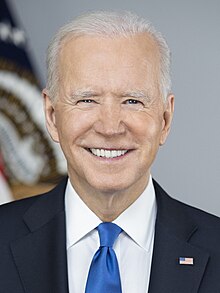
The 2020 United States presidential election in California was held on Tuesday, November 3, 2020, as part of the 2020 United States presidential election in which all 50 states plus the District of Columbia participated. California voters chose electors to represent them in the Electoral College via a popular vote, pitting the Republican Party's nominee, incumbent President Donald Trump, and running mate Vice President Mike Pence against Democratic Party nominee, former Vice President Joe Biden, and his running mate Kamala Harris, the junior senator from California. California had, in the 2020 election 55 electoral votes in the Electoral College, the most of any state. California was one of six states where Trump received more percentage of the two-party vote than he did in 2016. This election also marked the first time since 2004 that the Republican candidate won more than one million votes in Los Angeles County, due to increased turnout statewide.
California is considered a safe blue state in presidential elections, due to significant concentrations of Democratic voters in large urban regions such as the San Francisco Bay Area, Sacramento, Los Angeles, and San Diego. As predicted, Biden easily carried California on election day, earning 63.5% of the vote and a margin of 29.2% over Trump. Biden earned the highest percentage of the vote in the state for any candidate since Franklin D. Roosevelt in 1936, although Biden's margin of victory was slightly smaller than Hillary Clinton's 30.1% in 2016, making it one of just six states in which Trump improved on his 2016 margin. Biden became the first candidate in any race for any office in U.S. history to win more than 10 million votes in a single state, while Trump also received the most votes a Republican has ever received in any state in any race since the country's founding, even narrowly besting his vote total in Texas, a state that he won. Biden's vote margin was the largest vote margin for a presidential candidate in a singular state. (Full article...)
Portal:California/Selected article/38
The
In
Portal:California/Selected article/39
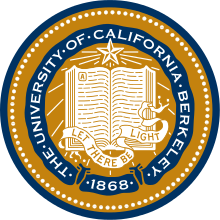
The
Berkeley is
Portal:California/Selected article/40
Portal:California/Selected article/41
Stockton was founded by
Portal:California/Selected article/42
The
Portal:California/Selected article/43
Eureka is the largest coastal city between San Francisco and Portland, Oregon, and the westernmost city of more than 25,000 residents in the 48 contiguous states. The proximity to the sea causes the city to have an extremely maritime climate with very small annual temperature differences and seasons mainly being defined by the rainy winters and dry summers, whereas nearby inland areas are much hotter in summer. It is the regional center for government, health care, trade, and the arts on the North Coast north of the San Francisco Bay Area. Greater Eureka, one of California's major commercial fishing ports, is the location of the largest deep-water port between San Francisco and Coos Bay, a stretch of about 500 miles (805 km). (Full article...)
Portal:California/Selected article/44 The Golden State Warriors are an American professional basketball team based in San Francisco. The Warriors compete in the National Basketball Association (NBA) as a member of the Pacific Division of the Western Conference. Founded in 1946 in Philadelphia, the Warriors moved to the San Francisco Bay Area in 1962 and took the city's name, before changing its geographic moniker to Golden State in 1971. The club plays its home games at the Chase Center.
The Warriors won the inaugural Basketball Association of America (BAA) championship in 1947, and won again in 1956, led by Hall of Fame trio Paul Arizin, Tom Gola, and Neil Johnston. After the trade of star Wilt Chamberlain in January 1965, the team finished the 1964–65 season with the NBA's worst record (17–63). Their rebuilding period was brief due in large part to the Warriors' drafting of Rick Barry four months after the trade. In 1975, star players Barry and Jamaal Wilkes powered the Warriors to their third championship, widely considered one of the biggest upsets in NBA history. (Full article...)
Portal:California/Selected article/45
As a result of recreational legalization, local governments (city and county) may not prohibit adults from growing, using, or transporting marijuana for personal use. Commercial activities can be regulated or prohibited by local governments although deliveries cannot be prohibited. Following recreational legalization, existing growers and suppliers of medical cannabis were required to register, comply with regulations, and apply for permits. Over half of the nonprofit dispensaries legally providing medical marijuana closed. Local agencies have been slow to approve retail stores selling cannabis for recreational purposes with most cities and counties banning retail with a wait and see approach. Many existing growers have been slow to apply for permits as it has been estimated that 60 percent or more of all cannabis consumed in the United States comes from northern California. The export of marijuana to other states remains illegal since the U.S. Drug Enforcement Administration considers it a Schedule I drug. (Full article...)
Portal:California/Selected article/46

In-N-Out Burgers,
As the chain has expanded, it has opened several distribution centers in addition to its original Baldwin Park location. The new facilities, located in
Portal:California/Selected article/47

Huntington Beach has a long 9.5-mile (15.3 km) stretch of sandy beach, mild climate, excellent surfing, and beach culture. Swells generated predominantly from the North Pacific in winter and from a combination of Southern Hemisphere storms and cyclones in the summer focus on Huntington Beach, creating consistent surf all year long, hence the nickname "Surf City". (Full article...)
Portal:California/Selected article/48

Kaiser Permanente (/ˈkaɪzər pɜːrməˈnɛnteɪ/; KP) is an American integrated managed care consortium, based in Oakland, California, United States, founded in 1945 by industrialist Henry J. Kaiser and physician Sidney Garfield. Kaiser Permanente is made up of three distinct but interdependent groups of entities: the Kaiser Foundation Health Plan, Inc. (KFHP) and its regional operating subsidiaries; Kaiser Foundation Hospitals; and the regional Permanente Medical Groups. As of 2023, Kaiser Permanente operates in eight states (Hawaii, Washington, Oregon, California, Colorado, Maryland, Virginia, Georgia) and the District of Columbia, and is the largest managed care organization in the United States.
Kaiser Permanente operates 39 hospitals and more than 700 medical offices, with over 300,000 personnel, including more than 87,000 physicians and nurses.
Each Permanente Medical Group operates as a separate
Portal:California/Selected article/49
Beginning in November 1969, the island was occupied for more than 19 months by a group of Native Americans, initially primarily from San Francisco, who were later joined by AIM and other urban Indians from other parts of the country, who were part of a wave of Native American activists organizing public protests across the US through the 1970s. In 1972, Alcatraz was transferred to the Department of Interior to become part of Golden Gate National Recreation Area. It was designated as a National Historic Landmark in 1986. (Full article...)
Portal:California/Selected article/50
People's Park in Berkeley, California, is a plot of land that is owned by the University of California, Berkeley. Located east of Telegraph Avenue, bound by Haste and Bowditch Streets, and Dwight Way, People's Park was a symbol during the radical political activism of the late 1960s.
While the land is the property of the University of California, People's Park established itself in the early 1970s as a de facto
Portal:California/Selected article/51
In 2010, the company was purchased by The Griffin Group, an investment and consulting company focused on alcohol brands, and became part of Anchor Brewers & Distillers, LLC. (Full article...)
Portal:California/Selected article/52
Black Flag is an American punk rock band formed in 1976 in Hermosa Beach, California. Initially called Panic, the band was established by Greg Ginn, the guitarist, primary songwriter, and sole continuous member through multiple personnel changes in the band. They are widely considered to be one of the first hardcore punk bands, as well as one of the pioneers of post-hardcore. After breaking up in 1986, Black Flag reunited in 2003 and again in 2013. The second reunion lasted well over a year, during which they released their first studio album in nearly three decades, What The... (2013). The band announced their third reunion in January 2019.
Black Flag's sound mixed the raw simplicity of the Ramones with atonal guitar solos and, in later years, frequent tempo shifts. The lyrics were written mostly by Ginn, and like other punk bands of the late 1970s and early 1980s, Black Flag voiced an anti-authoritarian and nonconformist message, in songs punctuated with descriptions of social isolation, neurosis, poverty, and paranoia. These themes were explored further when Henry Rollins joined the band as lead singer in 1981. Most of the band's material was released on Ginn's independent record label SST Records. (Full article...)
Portal:California/Selected article/53
Portal:California/Selected article/54
Laguna Beach (/ləˈɡuːnə/; Laguna, Spanish for "Lagoon") is a city in Orange County, California, United States. Located in Southern California along the Pacific Ocean, this seaside resort city has a mild year-round climate, scenic coves, and environmental preservation efforts. The population in the 2020 census was 23,032.
Historically settled by
Portal:California/Selected article/55
The San Diego Trolley (known colloquially as "the Trolley") is a light rail system operating in the metropolitan area of San Diego. The Trolley's operator, San Diego Trolley, Inc. (reporting mark SDTI), is a subsidiary of the San Diego Metropolitan Transit System (MTS). The trolley operates as a critical component of the MTS, with connections to and integrated travel tickets with the local bus systems.
The Trolley system serves 62 stations, over about 67.9 miles (109.3 km) of route, using three primary lines (the Blue, Green, and Orange lines) that operate daily, and the "downtown loop" heritage streetcar line (the Silver Line) that uses historic streetcars on select holidays. There is one downtown station where all the lines connect, and 13 other stations that provide transfers to a second line (and two of these also provide connections to heavy rail systems). (Full article...)
Portal:California/Selected article/56

Disneyland is a theme park at the Disneyland Resort in Anaheim, California. It was the first theme park opened by the Walt Disney Company and the only one designed and constructed under the direct supervision of Walt Disney, and opened on July 17, 1955.
Disney initially envisioned building a tourist attraction adjacent to his studios in Burbank to entertain fans who wished to visit; however, he soon realized that the proposed site was too small for the ideas that he had. After hiring the Stanford Research Institute to perform a feasibility study determining an appropriate site for his project, Disney bought a 160-acre (65 ha) site near Anaheim in 1953. The park was designed by a creative team hand-picked by Walt from internal and outside talent. They founded WED Enterprises, the precursor to today's Walt Disney Imagineering. Construction began in 1954 and the park was unveiled during a special televised press event on the ABC Television Network on July 17, 1955. Since its opening, Disneyland has undergone expansions and major renovations, including the addition of New Orleans Square in 1966, Bear Country in 1972, Mickey's Toontown in 1993, and Star Wars: Galaxy's Edge in 2019. Additionally, Disney California Adventure Park opened in 2001 on the site of Disneyland's original parking lot.
Disneyland has a larger cumulative attendance than any other theme park in the world, with 757 million visits since it opened (as of December 2021). In 2022, the park had approximately 16.9 million visits, making it the second most visited amusement park in the world that year, behind only
Portal:California/Selected article/57

The San Francisco Gay Men's Chorus (SFGMC) is the world's first openly gay chorus, one of the world's largest male choruses and the group most often credited with creating the LGBT choral movement.
The chorus was founded by gay music pioneer Jon Reed Sims. The group does not require that members identify as gay, bisexual, or male. The eligibility requirements for SFGMC are to be at least 18 years of age, to be able to sing in the Tenor 1, Tenor 2, Baritone or Bass range, and to pass the audition process defined by the Artistic Director. With a membership of over 300, the SFGMC presents a wide range of music and performs for many different kinds of audiences. (Full article...)
Portal:California/Selected article/58
The
The Sierra Nevada subalpine zone occurs between 2,450–3,660 metres (8,000–12,000 ft), and is characterized by an open woodland of several conifer species, including
Portal:California/Selected article/59

Uber Technologies, Inc., commonly referred to as
Uber classifies its drivers as
Portal:California/Selected article/60
Los Angeles Union Station is the main train station in Los Angeles, California, and the largest passenger rail terminal in the Western United States. It opened in May 1939 as the Los Angeles Union Passenger Terminal, replacing La Grande Station and Central Station.
Approved in a controversial ballot measure in 1926 and built in the 1930s, it served to consolidate rail services from the Union Pacific, Santa Fe, and Southern Pacific Railroads into one terminal station. Conceived on a grand scale, Union Station became known as the "Last of the Great Railway Stations" built in the United States. The structure combines Art Deco, Mission Revival, and Streamline Moderne style. It was placed on the National Register of Historic Places in 1980.
Today, the station is a major transportation hub for Southern California, serving almost 110,000 passengers a day. It is by far the busiest train station in the Western United States; it is Amtrak's fifth-busiest station, and is the thirteenth-busiest train station in North America. (Full article...)
Portal:California/Selected article/61
The stadium hosted the
Portal:California/Selected article/62
Grateful Dead was an American rock band formed in 1965 in Palo Alto, California. The band is known for its eclectic style, which fused elements of rock, blues, jazz, folk, country, bluegrass, rock and roll, gospel, reggae, and world music with psychedelia, the improvisation of their live performances, and its devoted fan base, known as "Deadheads". According to the musician and writer Lenny Kaye, the band's music "touches on ground that most other groups don't even know exists." For the range of their influences and the structure of their live performances, Grateful Dead are considered "the pioneering godfathers of the jam band world". (Full article...)
Portal:California/Selected article/63

The
Portal:California/Selected article/64
The La Brea Tar Pits is an active paleontological research site in urban Los Angeles. Hancock Park was formed around a group of tar pits where natural asphalt (also called asphaltum, bitumen, or pitch; brea in Spanish) has seeped up from the ground for tens of thousands of years. Over many centuries, the bones of trapped animals have been preserved. The George C. Page Museum is dedicated to researching the tar pits and displaying specimens from the animals that died there. La Brea Tar Pits is a registered National Natural Landmark. (Full article...)
Portal:California/Selected article/65
Golden Gate Park is an urban park between the Richmond and Sunset districts of San Francisco, United States. It is the largest park in the city, containing 1,017 acres (412 ha), and the third-most visited urban park in the United States, with an estimated 24 million visitors annually.
The creation of a large park in San Francisco was first proposed in the 1860s. In 1865, landscape architect Frederick Law Olmsted proposed a park designed with species native to San Francisco. The plan was rejected for a Central Park-style park designed by engineer William Hammond Hall. The park was built atop sand and shore dunes in an unincorporated area known as the Outside Lands. Construction centered on planting trees and non-native grasses to stabilize the dunes that covered three-quarters of the park. The park opened in 1870. (Full article...)
Portal:California/Selected article/66
SR 78 was one of the original state highways designated in 1934, although portions of the route existed as early as 1900. However, it was not designated east of Brawley until 1959. The freeway section in the
Nominations
- Adding articles
- Feel free to add an article (B-Class, GA-Class, FA-Class or higher) to the list above.
- Biographical articles should go on Portal:California/Selected biography.
- If you are unsure or do not know how to add an entry, please ask for help at the Portal talk:California talk page.
Usage
The layout design for these subpages is at Portal:California/Selected article/Layout.
- Add a new Selected article to the next available subpage.
- The "blurb" for all selected articles should be approximately 10 lines, for appropriate formatting in the portal main page.
- Update "max=" to new total for its {{Random portal component}} on the main page.

